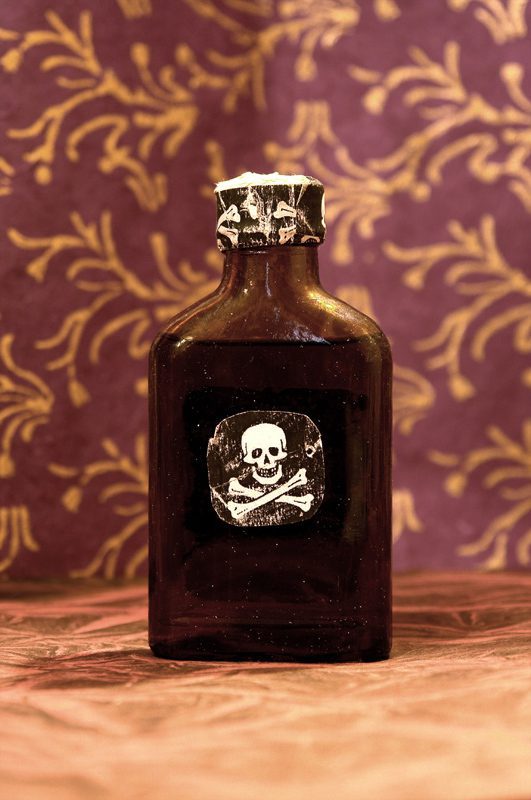Howard Fischer
Uppsala, Sweden
“Everything is a poison. Nothing is a poison. It is all a matter of dose.”
– Claude Bernard, French physiologist (1813–1878)

Agatha Christie (1890–1976) wrote sixty-six detective novels, fourteen collections of short stories, and three plays. She is the best selling fiction writer ever published, with two billion books sold. Her works have been translated into forty-four languages.1,2 She was born into a financially secure family, had little formal education, and no useful skills. She volunteered for service at a hospital in England for wounded soldiers during the Great War. She started as a dishwasher, was promoted to floor sweeper, then nurses’ assistant, and finally, assistant in the hospital pharmacy. She enjoyed the pharmacy work and paid attention to the varieties of chemicals and medications there. Through study, she learned a useful amount of toxicology.
After the war, she found herself with too little to do, and attempted to write a detective story. The novel, The Mysterious Affair at Styles (1921), was a success. In addition to appreciation by the public and critics, the Pharmaceutical Journal praised Christie’s “knowledgeable” way of writing about poisons.3 Her later characters, Belgian detective Hercule Poirot and nosy crime-solver Miss Marple, became known to readers worldwide.
During the Second World War, she volunteered again as a pharmacy assistant at the University College Hospital, London. In the course of her writing career, “Christie kept up to date with the safe and dangerous use of drugs. She collected articles about real live murder cases.”4
In her stories there are forty-one murders, attempted murders, or suicides by poisoning. The most frequently used agents are cyanide, arsenic, morphine, and strychnine.5 Christie was also an avid gardener, and most of the poisons in her books are plant-derived. The long list includes digitalis (from foxglove), nicotine, ricin (from castor beans), strychnine (from nux vomica), eserine or physostigmine (from calabar beans), morphine (poppies), taxine (yew tree), coniine (hemlock), cyanide (fruit pits), aconite (wolfsbane), gelsemium (swamp jasmine), hyoscamine (henbane; possibly Shakespeare’s “cursed hebenon” used to kill King Hamlet), and cocaine (coca). Non-plant organic substances used are Bacillus anthracis, the agent causing anthrax, and boomslang snake (Dispholidus typus) venom.
A number of inorganic substances are also among her poisons—arsenic, thallium, phosphorus, the sedative chloral hydrate, “corrosive acid” (probably hydrochloric acid, HCl), and veronal (and other barbiturates).6-10
Agatha Christie’s novels have saved lives. In 1975, a woman in South America suspected a friend was being poisoned by his wife. She had read The Pale Horse and recognized the signs and symptoms of thallium poisoning from the novel.11 One year later, a nineteen-month-old girl from Qatar was brought to the Hammersmith Hospital in London with puzzling findings. Luckily, a nurse recognized—again from The Pale Horse—the symptoms of thallium intoxication. The child was, indeed, suffering from thallium poisoning, and the offending substance was a roach poison used at home containing thallium sulfate.12
References
- Lucy Worsley. Agatha Christie: A Very Elusive Woman. London: Hodder and Stoughton, 2022.
- “Agatha Christie.” Wikipedia.
- Worsley, A Very Elusive Woman.
- Kathryn Harkup, A is for Arsenic, quoted in Janet Sellick, “Agatha Christie, queen of crime and her deadly dispensary of poison,” West of England Medical Journal, 117(2), article 2, October 16, 2017.
- Worsley, A Very Elusive Woman.
- Worsley, A Very Elusive Woman.
- “Agatha Christie,” Wikipedia.
- Joyce Newman. “Agatha Christie loved poisonous plants.” Garden Collage, September 27, 2017.
- Agnita Kundu. “Science in literature: The use of chemistry in the detective fictions of Agatha Christie.” Academica, 11(3), March 2021.
- Anne Harrison. “Poisons used in Agatha Christie’s mystery novels.” OwlCation, July 12, 2022.
- Nicola Tulley. “Agatha Christie and the golden age of poisons.” New Yorker, September 8, 2015.
- John Emsley. “The poison prescribed by Agatha Christie: Thanks to the mystery writer, the deadly properties of thallium sulphate have become common knowledge (CORRECTED),” Independent, July 19, 1992.
HOWARD FISCHER, M.D., was a professor of pediatrics at Wayne State University School of Medicine, Detroit, Michigan. He sympathizes with Hercule Poirot when people call the Belgian detective French.

Leave a Reply